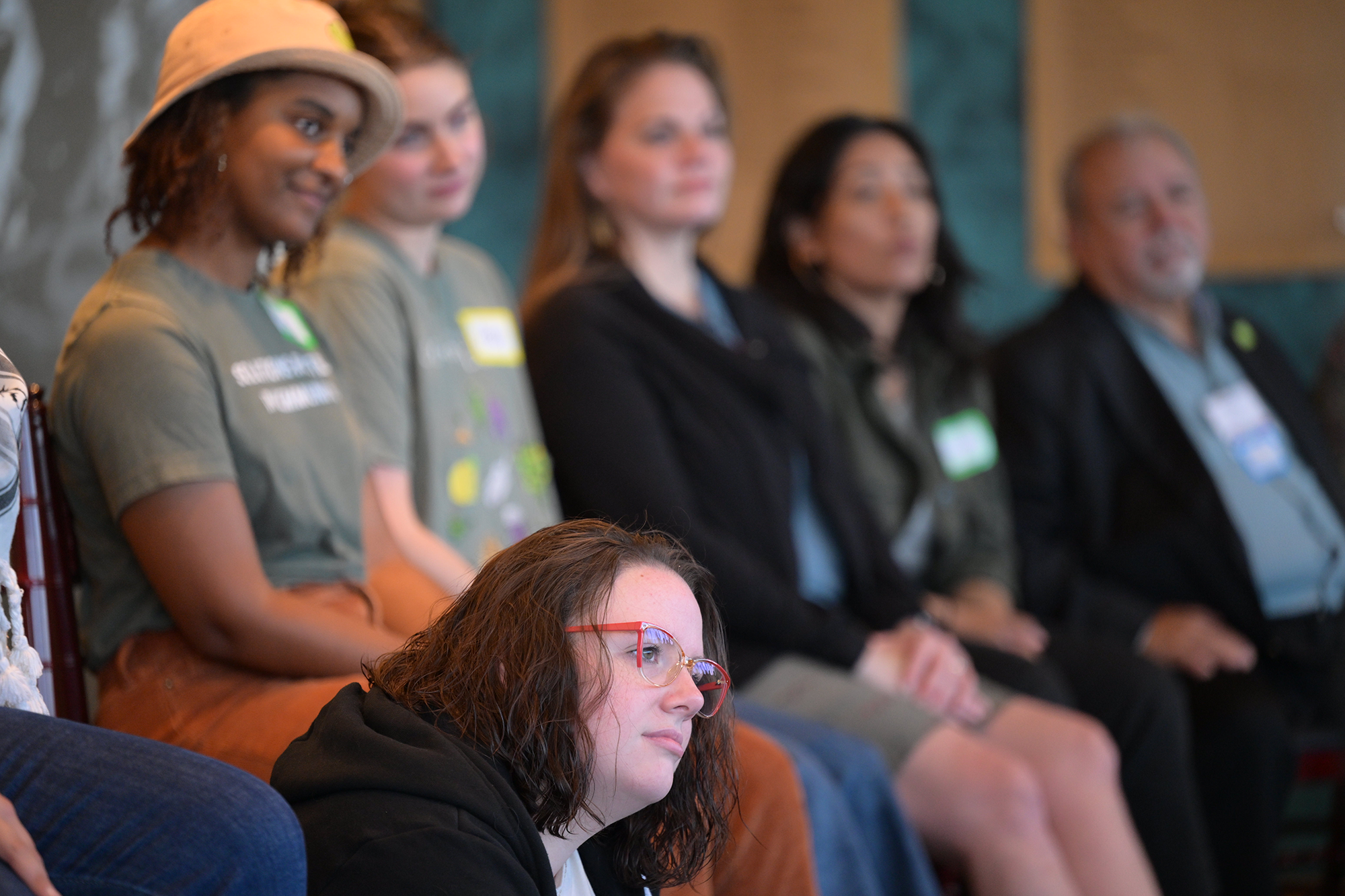
In this week’s Principle 6 Newsletter, Mike Mercer explores how co-ops, working together, could empower people and communities through the benefits of ownership and wealth-building.
“As in all commercial enterprise, structure doesn’t guarantee success, but the co-op structure creates the conditions for asset accumulation—a stepping-stone to financial security,” he writes.
While you’re thinking about the possibilities of co-op ownership, consider how “cooperation among cooperatives” could accelerate that effort. NCBA CLUSA is on a mission to document Principle 6 collaborations across the country so we can identify trends, document best practices and share this knowledge with you—our fellow cooperators!
Share your example of Principle 6
Principle 6 Newsletter – OwnershiP6
April 6, 2022
Homeownership has been an essential element of the American dream for decades and continues to be so today. Purchasing a home brings pride of ownership and the sense of belonging in a community, and it plays a vital role in helping to build strong, stable neighborhoods. – “Building Generational Wealth through Home Ownership,” Mortgage Bankers Association, 11-2-2001
Ownership, equity, and empowerment make worker cooperatives so unique. Artists own their art and their gallery; brewers own their beer and their brewhouse; manufacturing workers own their products and their company. The cooperative business model offers unrestricted entrepreneurial opportunity for workers to build equity and ownership in the economy and shape the future they want for their businesses. “Cooperatives for a Better World,” website, 4-3-2022
If we can come to recognize and invest in the mutualist sector again, we’ll see that it is perfectly positioned to deliver tomorrow’s safety net. After all, when we break down the safety net into component parts – universal health care, education and jobs training, affordable quality food, clean drinking water, unemployment insurance, the protection of workers from exploitation – it’s just a set of solutions to problems that we can begin to solve ourselves, just as we have done in the past. – “Mutualism,” Sara Horowitz, 2021

The National Credit Union Foundation is championing an initiative called Financial Well-being for All. According to the Consumer Financial Protection Bureau, financial well-being consists of four elements:
- Control over day-to-day, month-to-month finances
- The capacity to absorb a financial shock
- The financial freedom to make choices to enjoy life
- Being on track to meet financial goals
The 2020 U.S. Financial Health Pulse illustrates that more than two thirds of people in America do not feel financially secure. These startling proportions rise into the 80% range for people of color. The Foundation advises that credit unions need look no further than their own employees to recognize the stress of being financially insecure.
The family household depends on many things to achieve financial well-being. For most, having a job, maybe several jobs in the household, is the place to start. The earnings from those jobs must cover living expenses and enable contributions to savings. Eventually, those savings should accumulate to the point where shocks can be absorbed, a set of new tires for example. There also needs to be protection from the big risks – unemployment, poor health, disability, disaster, and the like. At some point, old age will need to be financed. Sara Horowitz calls this the safety net. Education and job skill training are necessary ingredients to achieve all of the above.
History has illustrated that financial security for working folks usually comes from owning something. The kind of owning where assets exceed debt obligations. For many, the path is buying a home with 30 years of working runway ahead, making the payments on time and using the value of the home to make retirement possible. For a few, it could also mean buying rental properties, building up a 401K or investing in the stock market. For even fewer, asset accumulation could come from owning a piece of a commercial enterprise. And, of course, controlling life costs is one of the ingredients for financial security with any asset accumulation strategy. Highly leveraged McMansions and leasing a new Escalade every two years are the sorts of behavior that lead to unaffordable life costs.
So, what does this have to do with co-ops?
Well, essentially everything. Co-ops exist to improve the well-being of members. And most co-op members are among the two thirds that experience stress with their financial circumstances. Even purchasing co-ops that serve successful businesses (ACE Hardware comes to mind) depend on a customer base that comes from the two thirds. And, in virtually every case, financial well-being is affected by all of the other forms of well-being. So maybe co-ops should be thinking about solutions that holistically address the well-being of members. Maybe household asset accumulation – ownership – could serve as a center of gravity for solutions built from co-op collaboration in the years ahead.
OwnershiP6!
Start with the home. Prices have skyrocketed. Rates are moving up. Prices for materials are rising fast. Affordability has become a significant problem for many households. There are 137 million housing units in the U.S. 37% currently rent their homes. And, for folks under 38, the percentage of renters is 65%. While low-income homeowners are less likely to own a home, 55% of those that do have paid off their mortgage! This certainly reinforces the idea that ownership can contribute to financial security. So, how could co-ops contribute by working together? What if housing co-op leaders, co-op banks and credit unions formed an affordable housing collaboration with a goal of introducing co-op housing across the country? Strategies could be developed for conversions and new construction. Worker co-ops might assemble the construction crews and developers that will be needed. Communities and non-profits could become partners. Who could paint the vision?
The workplace is another opportunity. Much attention is being pointed at exit-to-employee conversion strategies. While many of these conversions (especially of size) are being framed up under the ESOP structure, interest is growing for conversions to co-ops, perpetual trusts, and hybrid structures. Existing co-ops could enable more cooperative workplace conversions. Workers could begin to build ownership in commercial assets. Starting new worker co-ops can lead to the same outcomes. As in all commercial enterprise, structure doesn’t guarantee success, but the co-op structure creates the conditions for asset accumulation – a stepping-stone to financial security. If co-ops worked together across sectors to advance the creation of worker co-ops, a significant contribution to member well-being could be the reward.
Learning is critical for talent development and skill enhancement. From the perspective of the household, knowledge is an asset. Like other assets, it is accumulated over time through the investment of household time and money. The University Credit Union in Austin applies itself to the advancement of post-secondary learning and job-skills training in the area. Their initiative could be amplified if the entire Austin co-op community and other civic organizations combined effort. Building the household knowledge asset is ripe for cross-sector collaboration. One potential benefit for investing in knowledge development would be visibility to the mainstream secondary education infrastructure, the kind that would lead to teaching the unique features of the co-op business model in prominent colleges and universities.
In the mid-20th century, employers and government provided workers with a significant safety net. Company-funded health insurance, contributions to retirement savings, life and disability insurance are among the benefits that industrial workers could count on. Government provided unemployment insurance, old age health/retirement benefits, child-care assistance, and tax incentives. Today, the decline of manufacturing jobs and unions combined with the rapid growth of part-time (contract) work and the gig economy has removed the safety net from a significant part of the population. In one sense, access to an affordable safety net has become a meaningful household asset. It has also become a significant issue for communities.
Vibrant communities are another ‘asset’ that significantly affects the well-being of people. Deindustrialization and global labor sourcing have significantly weakened the ability for municipalities to invest in community infrastructure. In her book “Mutualism”, Sara Horowitz says, “New networks of mutualist organizations are the only way we’ll be able to build back the core economic functions of cities: healthcare, schools, job training, access to healthy food.” Co-ops, working together, could give people an opportunity to experience the benefits of deeper community ‘ownership’.
The list of ownership enhancement ideas goes on. The visions of possibility are still to be created. But, in concept, the idea is that co-ops could collaborate to paint the pictures and execute on the plans for helping people to acquire ownership – of all kinds. In so doing, co-ops would be the causal agent for enhanced well-being and reduced financial stress.
OwnershiP6 does not need to be a national strategy. In fact, it is probably best to think of it as a local (community level) initiative. And it should start small. Co-ops coming together to address one ownership enhancement strategy, affordable housing for example. With success, expanding the body of work can be considered. In time, perhaps sooner than we think, nation-wide awareness would grow. Cooperatives and their mission would be better understood – and appreciated.
Stay tuned,
Mike


